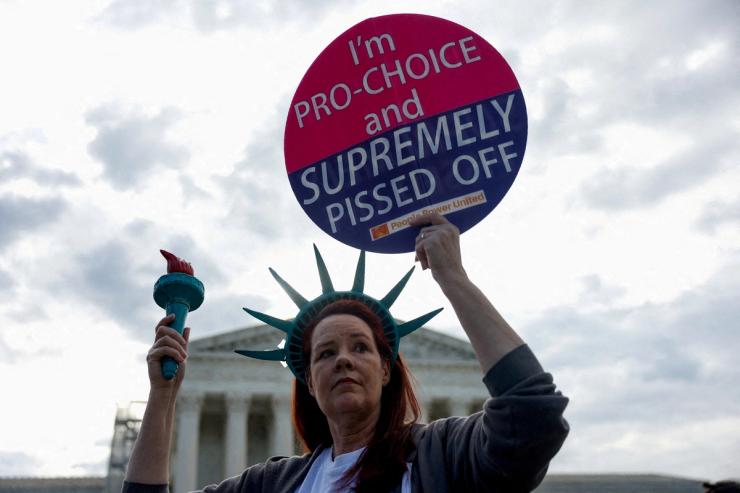The News
Monday, June 24 marks two years since the Dobbs decision, when the United States Supreme Court overturned Roe v. Wade and ended the constitutional right to abortion.
Some 14 states now have total abortion bans, while 7 others have gestational limits lower than the standard set by Roe. In some of these states, the limit is 6 weeks — effectively restricting most abortions. In most states where abortion is legal, those protections have been strengthened.
Roe’s overturning also led to several lawsuits that have also made their way to the Supreme Court. On June 14, the Court preserved access to a drug used in most medication abortions for now, and the justices are expected to rule on whether hospitals in states with total bans must provide patients with abortion care in emergencies.
SIGNALS
Abortion could swing the US election
Abortion could help Democrats up and down the ballot this November, and give President Joe Biden a boost in key swing states. That’s because abortion bans and restrictions are broadly unpopular with voters, the majority of whom say the Supreme Court should have upheld Roe. A record number of voters say they’ll only vote for a candidate who shares their views on abortion. Democrats have seized on that momentum in races across the country, “working hard to make sure the public knows that Republicans are responsible,” the Brookings Institute’s Elaine Kamarck wrote.
Maternal healthcare has gotten substantially worse post-Roe, doctors say
The fall of Roe had an overwhelmingly negative effect on maternal health care, according to polling of doctors by the health research nonprofit KFF. The majority (68%) of OBGYNs said it made managing pregnancy-related medical emergencies harder, and 64% said the ruling worsened pregnancy-related mortality. Reports of health complications triggered by abortion bans and restrictions have increased as doctors struggle to provide care within the bounds of local laws, which have also limited care for people who experience miscarriage or stillbirth. Additionally, the restrictions have disproportionately affected people of color, immigrants, and non-English speakers.
Abortions have actually increased, likely thanks to telehealth
The US recorded its highest number of abortions in over a decade during 2023, the first full calendar year after the Court struck down Roe. Reproductive-rights nonprofit the Guttmacher Institute attributed the uptick to increased access to telehealth since the pandemic and the use of medication abortion. An estimated 1,026,690 Americans had an abortion last year, according to Guttmacher Institute, which is 10% more than in 2020, the last year for which there is comprehensive data. Groups that oppose abortion say the numbers highlight “a concerning trend” of relaxed policies around mail-order abortion pills.



